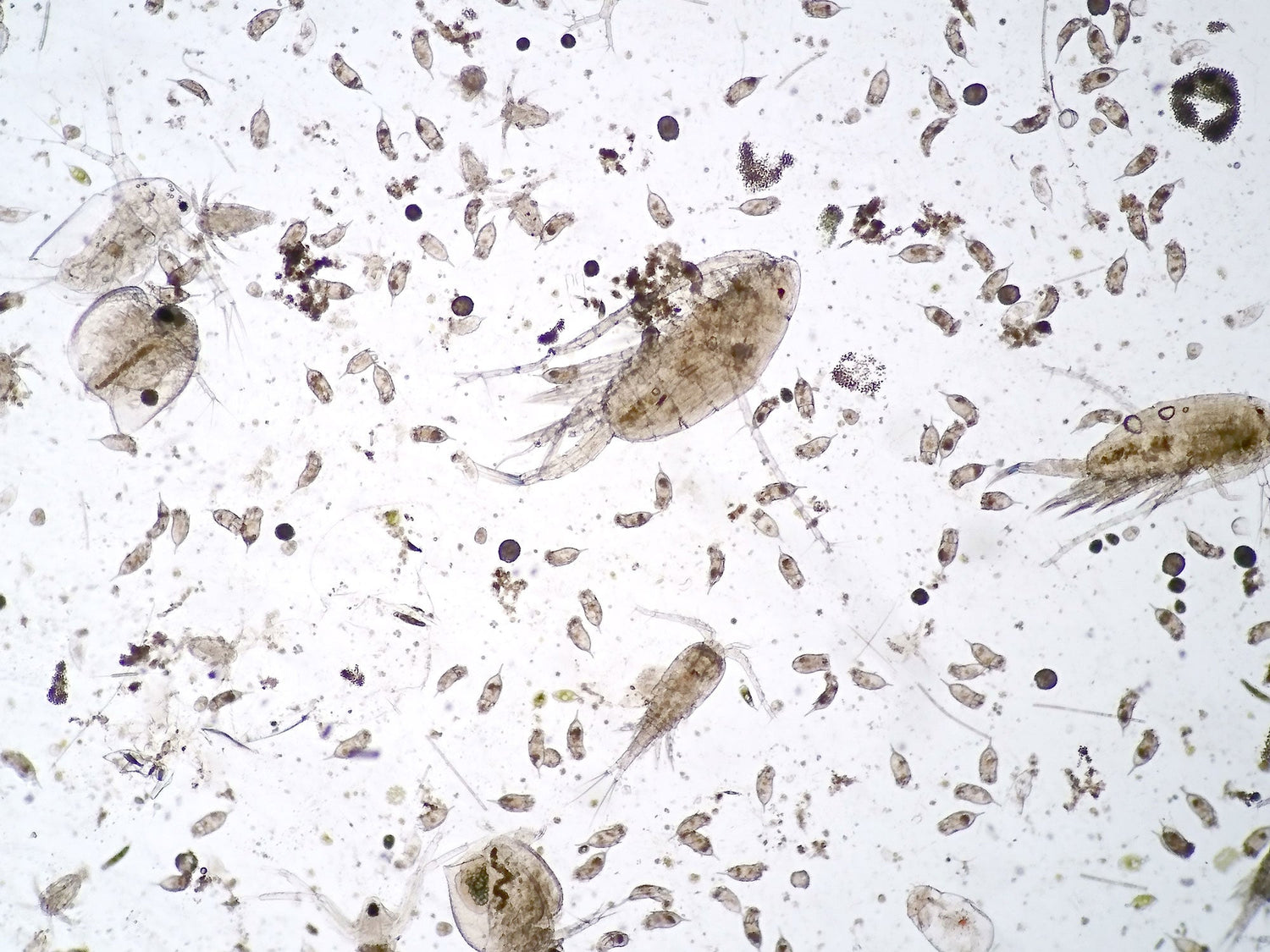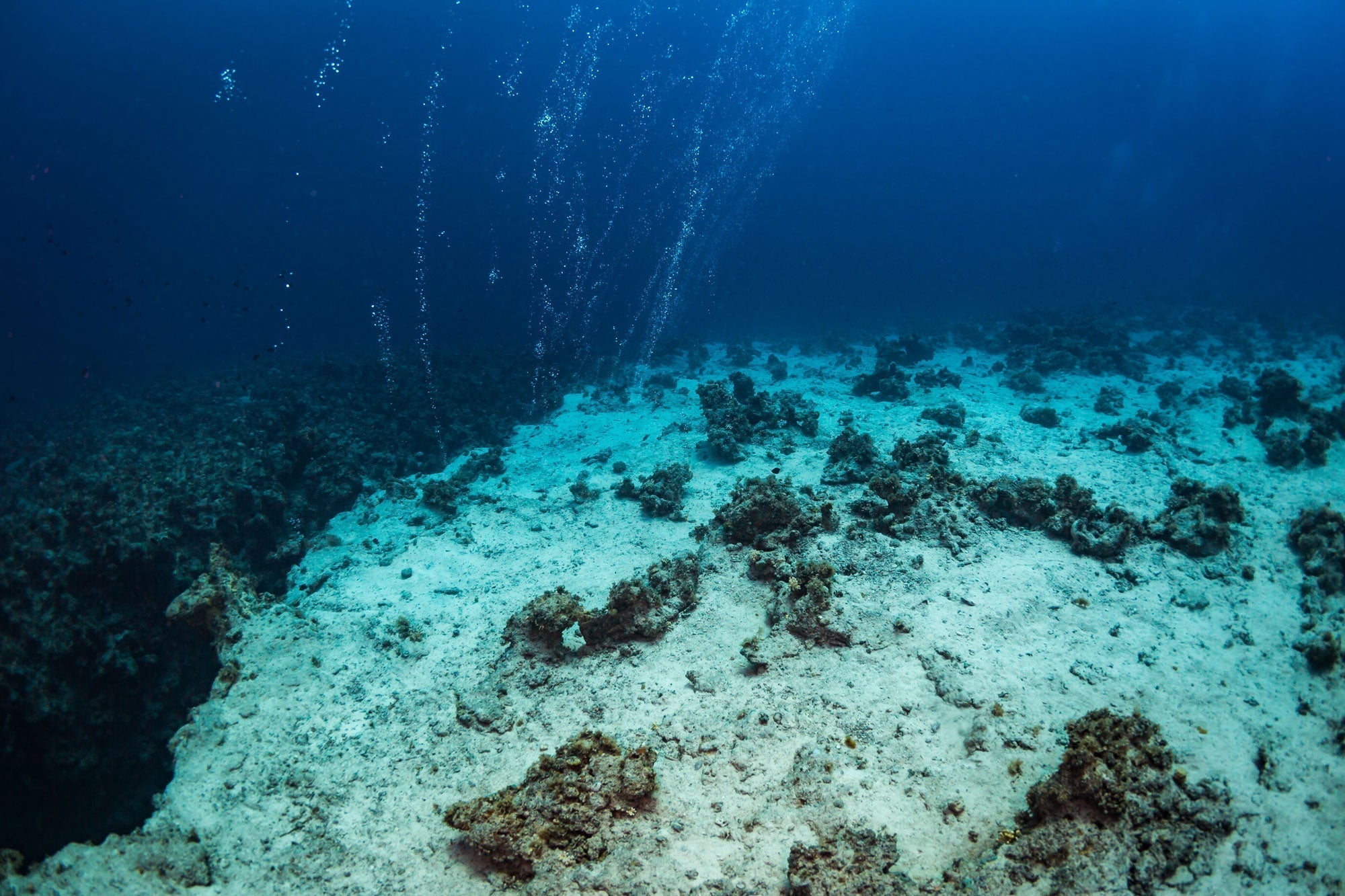Introduction
Microplastics, plastic particles smaller than 5 mm as defined by the U.S. National Oceanic and Atmospheric Administration (NOAA), represent a pervasive environmental pollutant with implications for global food webs (NOAA). Originating from primary sources like microbeads and microfibers, and secondary fragmentation of larger plastics, microplastics infiltrate marine and terrestrial ecosystems through wastewater, runoff, and atmospheric deposition (National Geographic). Their small size facilitates ingestion by primary producers, initiating a cascade of trophic transfer that culminates in human consumption via seafood and crops. This article traces this pathway, leveraging recent peer-reviewed research to examine uptake by plankton, transfer through food webs, contamination in edible species, and food safety implications for human health.
Uptake by Primary Producers: Plankton as the Entry Point
Plankton, encompassing phytoplankton and zooplankton, form the foundation of aquatic food webs, serving as primary producers and consumers, respectively. Their interactions with microplastics initiate contamination pathways.
Phytoplankton
Phytoplankton, such as diatoms and cyanobacteria, do not actively ingest microplastics but are affected through adsorption and environmental interference. Studies indicate that microplastics can adhere to phytoplankton aggregates, altering their sinking rates and carbon export potential (ResearchGate). Research by Long et al. (2015) demonstrated that microplastics reduce photosynthetic efficiency in marine algae, with high concentrations (e.g., 50 mg/L) decreasing chlorophyll content by up to 20% (ScienceDirect). A mesocosm study further observed shifts in community composition, with increased Synechococcus abundance under microplastic exposure, potentially disrupting carbon fixation (PubMed).
Zooplankton
Zooplankton, including copepods and euphausiids, actively ingest microplastics due to their size overlap with natural prey (0.1–5 mm). Cole et al. (2013) reported ingestion rates of up to 90% in lab-exposed copepods, with polystyrene beads reducing feeding efficiency by 30% (ScienceDirect). Field studies in the Northeast Pacific found microplastics in 1 out of every 34 copepods and 1 out of 17 euphausiids, with larger particles (816 ± 108 μm) in euphausiids compared to copepods (556 ± 149 μm) (PubMed). These interactions impair reproduction and growth, with Kvale et al. (2021) estimating a potential 5% reduction in global ocean oxygen due to altered zooplankton grazing (Nature Communications).
Trophic Transfer Through the Food Web
Microplastics transfer from plankton to higher trophic levels via predation, a process termed trophic transfer, with potential for bioaccumulation and biomagnification.
Lower Trophic Levels
Filter feeders and small fish consume contaminated plankton, amplifying microplastic concentrations. A controlled study by Costa et al. (2020) showed jellyfish (Pelagia noctiluca) ingesting microplastic-laden copepod nauplii, with no immediate behavioral impact but confirmed transfer (Frontiers). Larval inland silversides (Menidia beryllina) exhibited both direct ingestion and trophic transfer from tintinnids, with microplastics detected in 85% of exposed larvae (ASLO).
Higher Trophic Levels
Predatory fish and marine mammals accumulate microplastics through their diet. Nelms et al. (2018) found microplastics in seal scat and their fish prey, indicating indirect exposure (ScienceDirect). Seabirds, with 90% of sampled species containing microplastics, demonstrate bioaccumulation, often via fish consumption (PMC - Smith et al.). However, biomagnification—where concentrations increase with trophic level—is debated, with Carbery et al. (2018) suggesting limited evidence due to egestion and depuration (PubMed).
Contamination in Seafood and Crops
Microplastics reach human diets through contaminated seafood and agricultural crops, with varying levels of exposure.
Seafood Contamination
Seafood is a primary vector for microplastic ingestion. A 2025 Oregon study detected microplastics in 99% of 182 seafood samples, with pink shrimp showing the highest levels, dominated by fibers (>80%) from textiles (The Guardian). Shellfish, consumed whole, pose a higher risk, with estimates of 11,000 particles ingested annually by heavy consumers (Forbes). Fish show contamination in 25–58% of global samples, primarily in gastrointestinal tracts, with limited transfer to edible muscle (PMC - Barboza et al.).
Crop Contamination
Terrestrial crops are contaminated via soil amendments (e.g., biosolids) and irrigation water. A 2020 Italian study found microplastics in apples (highest levels), carrots, lettuce, and other produce, with uptake via roots confirmed in lab experiments (EHN; PNNL). Biosolids, applied to over 20 million acres of U.S. farmland, contain over 10,400 particles/kg, facilitating microplastic transfer to crops (Sierra Club).
Food Safety Implications
Microplastic contamination raises food safety concerns, with potential health risks still under investigation.
Human Health Risks
Microplastics may induce inflammation, oxidative stress, and cytotoxicity. In vitro studies show polystyrene microplastics causing cellular damage in human cell lines, with animal models indicating liver inflammation and reproductive effects (Medical News Today; PMC - Campanale et al.). They also vector contaminants like BPA and PCBs, potentially leading to endocrine disruption (PubMed - Carbery et al.). Human studies detect microplastics in blood and stool, with Cox et al. (2019) estimating 39,000–52,000 particles ingested annually (Cox et al.).
Current Knowledge and Gaps
The FDA asserts that current microplastic levels in food do not pose a definitive health risk, citing insufficient evidence (FDA). However, emerging research suggests potential long-term effects, with Harvard noting reproductive risks in mice (Harvard Medicine). The World Economic Forum ranks pollution, including microplastics, among the top 10 global risks, urging further study (WEF).
Summary Table: Microplastics in the Food Chain
| Level | Microplastic Interaction | Contamination Example | Health Implication |
|---|---|---|---|
| Plankton | Ingestion, growth inhibition | 1 particle/34 copepods | Reduced ecosystem productivity |
| Fish | Trophic transfer | 25–58% of sampled fish | Potential inflammation |
| Shellfish | Direct ingestion | 11,000 particles/year | Chemical exposure risk |
| Crops | Root uptake | Highest in apples | Unknown long-term effects |
Conclusion
Microplastics traverse the food chain from plankton to human plates, with significant contamination in seafood and crops. Their uptake by primary producers like plankton initiates trophic transfer, leading to accumulation in fish, shellfish, and terrestrial produce. While food safety risks remain under scrutiny, potential health impacts—ranging from inflammation to chemical toxicity—warrant concern. Robust mitigation, including reducing plastic inputs and advancing research, is essential to safeguard food security and public health in an increasingly plastic-laden world.
References
- NOAA: Microplastics Overview
- National Geographic: Microplastics
- Microplastics can alter phytoplankton - PubMed
- Microplastics can alter phytoplankton - ScienceDirect
- Interactions between microplastics and phytoplankton - ResearchGate
- Bioavailability and effects of microplastics on zooplankton - ScienceDirect
- Ingestion of Microplastics by Zooplankton - PubMed
- Zooplankton grazing of microplastic - Nature Communications
- Trophic Transfer to Jellyfish - Frontiers
- Trophic transfer in estuarine food chain - ASLO
- Microplastic transfer in top predators - ScienceDirect
- Trophic transfer of microplastics - PubMed
- Microplastic contamination in seafood - The Guardian
- Microplastics in shellfish - Forbes
- Microplastics in Fish - PMC
- Microplastics in farm soils - EHN
- Root uptake of microplastics - PNNL
- Microplastics in Agriculture - Sierra Club
- Health risks of microplastics - Medical News Today
- Effects on Human Health - PMC
- Microplastics in Foods - FDA
- Microplastics Everywhere - Harvard Medicine
- Microplastics health crisis - WEF
- Cox et al., 2019 - Microplastics Ingestion



Leave a comment
This site is protected by hCaptcha and the hCaptcha Privacy Policy and Terms of Service apply.